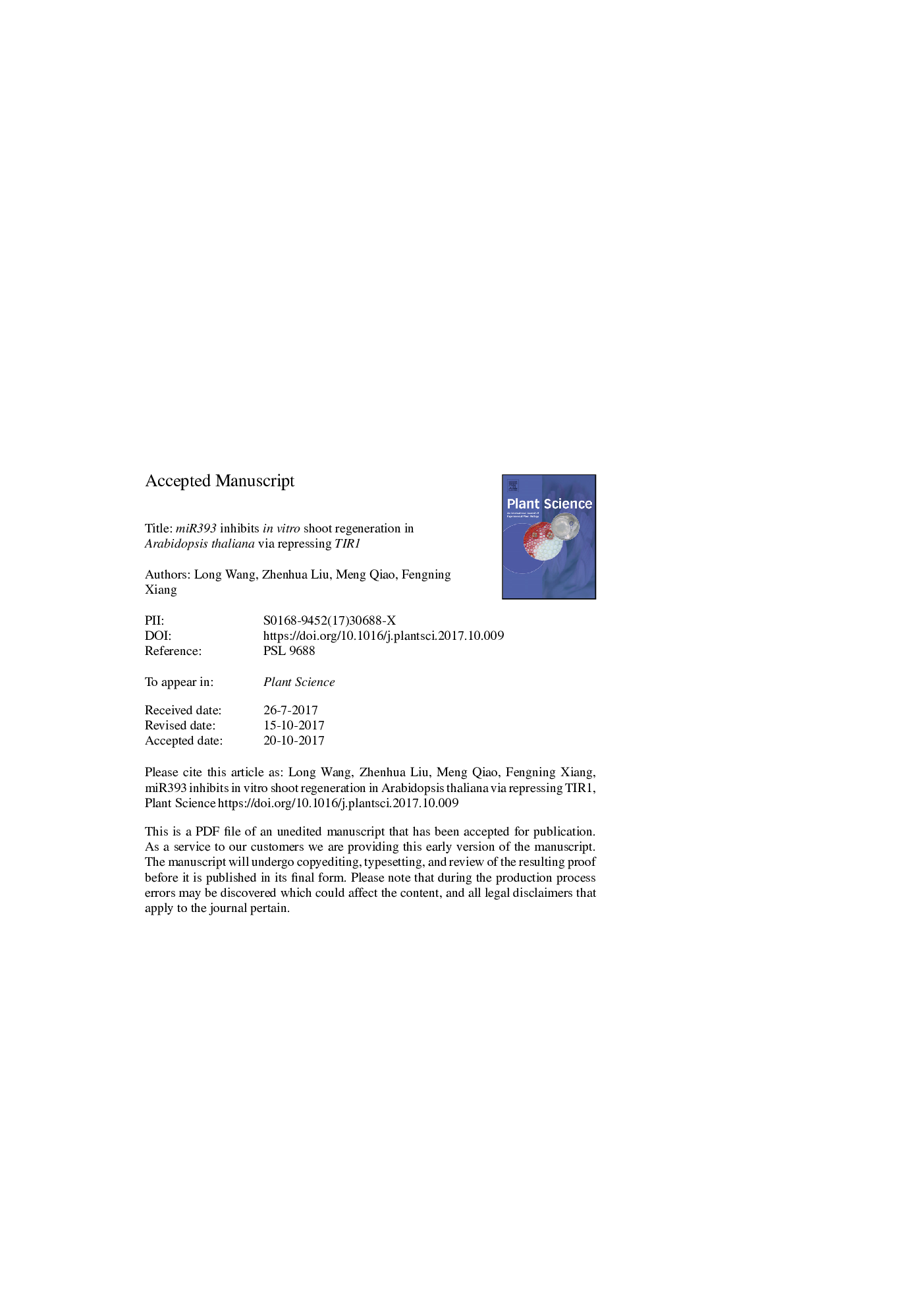| Article ID | Journal | Published Year | Pages | File Type |
|---|---|---|---|---|
| 8356891 | Plant Science | 2018 | 22 Pages |
Abstract
A large number of genes are involved in the control of shoot regeneration from in vitro cultured plant material. The abundance of the miR393 was different between regenerable and non-regenerable calli induced from Arabidopsis thaliana explants. The regenerability of root explants derived from p35S:miR393a (the miR393a over-expressing line) was shown here to be poorer than that of the wild type (WT). Also, explants derived from plants engineered to constitutively express MIM393 (a mutated form of miR393) had an enhanced level of shoot regeneration. The number of newly formed shoot apical meristems (SAMs) was smaller in p35S:miR393a, while it was larger in p35S:MIM393, compared to the WT, indicating that miR393a inhibited shoot regeneration via repressing the de novo formation of SAMs. The capacity to regenerate shown by plants harboring mTIR1 (a form of TIR1 not cleavable by miR393) was similar to that shown by lines constitutively expressing MIM393, while regenerability of tir1-1 (a loss-of-function mutant) was similar to p35S:miR393a. miR393a and TIR1 were both transcribed at high levels in the initiation sites of nascent shoot apical meristems. Thus, the miR393-TIR1 molecular regulation pathway appears to be a component of the regulatory control over shoot regeneration from in vitro culture.
Related Topics
Life Sciences
Agricultural and Biological Sciences
Plant Science
Authors
Long Wang, Zhenhua Liu, Meng Qiao, Fengning Xiang,
